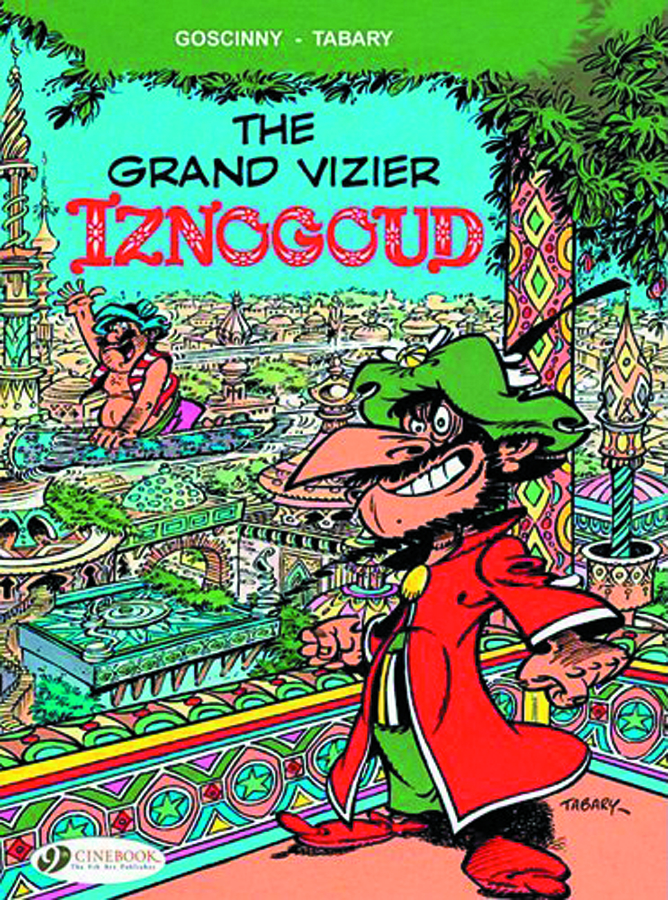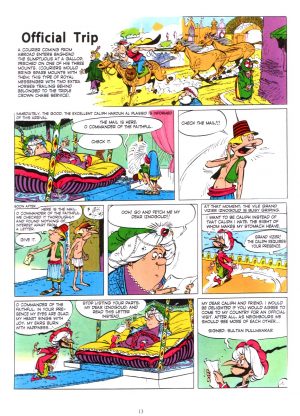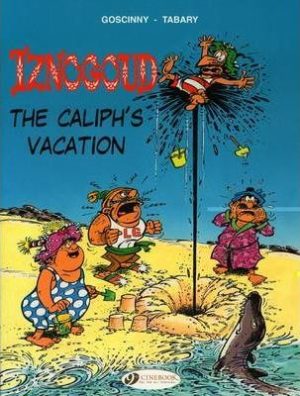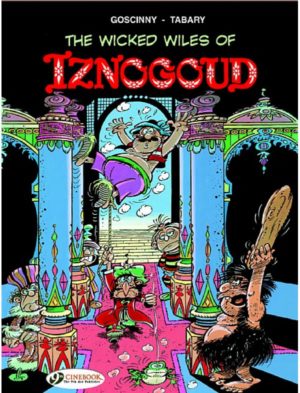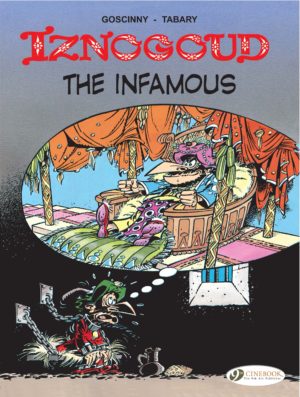Review by Andrew Littlefield
Originally published in France in 1966, this was the first album to collect stories from this long-running humour series set in fairy tale Baghdad. Lead character Iznogoud is the scheming second-in-command Grand Vizier who “wants to be Caliph instead of the Caliph” (the placid, perennially trusting Haroun El Poussah). Invariably, Iznogoud’s elaborate plans to depose his leader and become top dog himself go disastrously wrong.
Early on in Orientalism, his landmark study of Western depictions of the East, the writer Edward W Said observes that, “The Orient is a European invention”. It’s fair to say that the French writer-artist team of René Goscinny and Jean Tabary are implicated in this charge. Their Baghdad exists outside of time, with never a mention of Islam. Tabary’s typically energetic cover to The Grand Vizier Iznogoud, replete with bejewelled turrets, flying carpets, ornate drapery and lavish costuming, is both visually splendid and a virtual compendium of orientalist cliché, hinting at the many cultural stereotypes within. First published in the 1960s, Iznogoud from time to time also shows its age in its recourse to racial caricature, and by its almost complete absence of female characters.
Readers familiar with Asterix, Goscinny’s most popular creation, may well recognise the way that national identity is articulated here – a kind of benign bemusement at different values and behaviours. However, any contempt for ‘the other’ is at least partly mitigated by a universalising tendency that seeks to celebrate those foibles and feelings that actually unite human beings across different cultures and historical eras. Or, as Obelix from the Asterix series often observes, “These humans are crazy”. Moreover, Goscinny’s scripts frequently show that the author has bothered to do his historical homework, suggesting at least a superficial engagement with Arabic culture. One of the best of the six stories collected in this volume, ‘The Horde’, opens with a surprisingly informative caption about Mongolian yurts.
The Grand Vizier Iznogoud contains five other eight-page tales: ‘The Genie’, ‘Official Trip’, ‘The Strong-Arm Men’, ‘A Lookalike’ and ‘The Giants’ Island’, the latter one of the series’ frequent forays into outright fantasy. This brevity rather hobbles Goscinny’s remarkable ability to structure complex, beautifully resolved farcical narratives. Over eight pages, formula and repetition become more apparent, especially when reading more than a few stories in one go, and at times it certainly feels as if Iznogoud is pitched at a slightly younger audience than Goscinny’s other series. Nonetheless, Goscinny and Tabary never let their work drop below a certain polished standard, and there’s plenty to enjoy here.
